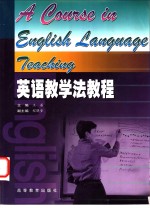
- 作 者:王蔷主编
- 出 版 社:北京:高等教育出版社
- 出版年份:2000
- ISBN:7040087979
- 标注页数:199 页
- PDF页数:208 页
请阅读订购服务说明与试读!
订购服务说明
1、本站所有的书默认都是PDF格式,该格式图书只能阅读和打印,不能再次编辑。
2、除分上下册或者多册的情况下,一般PDF页数一定要大于标注页数才建议下单购买。【本资源208 ≥199页】
图书下载及付费说明
1、所有的电子图书为PDF格式,支持电脑、手机、平板等各类电子设备阅读;可以任意拷贝文件到不同的阅读设备里进行阅读。
2、电子图书在提交订单后一般半小时内处理完成,最晚48小时内处理完成。(非工作日购买会延迟)
3、所有的电子图书都是原书直接扫描方式制作而成。
Unit 1 Language and Learning 1
1.1 How do we learn languages? 1
1.2 Views on language 2
1.3 Views on language learning 4
1.4 What is a good language teacher? 6
1.5 How can one become a good language teacher? 7
1.6 An overviewofthe book 11
Unit 2 Communicative Principles and Activities 13
2.1 Language use in real life vs.traditional pedagogy 13
2.2 Fostering communicative competence 15
2.3 The implementation of language skills 16
2.4 Communicative activities 18
2.5 Conclusion 23
Unit 3 Lesson Planning 24
3.1 Why is lesson planning necessary? 24
3.2 Principles for good lesson planning 25
3.3 Macro planning vs.micro planning 26
3.4 Components of a lesson plan 28
3.5 Sample lesson plans 31
3.6 Conclusion 34
Unit 4 Classroom Management 35
4.1 The role of the teacher 35
4.2 Student grouping 40
4.3 Discipline in the language classroom 43
4.4 Conclusion 47
Unit 5 Teaching Pronunciation 48
5.1 The role of pronunciation 48
5.2 The goal of teaching pronunciation 50
5.3 Aspects of pronunciation 52
5.4 Practising sounds 53
5.5 Practising stress and intonation 56
5.6 Conclusion 58
Unit 6 Teaching Grammar 60
6.1 The role of grammar in ELT 60
6.2 Grammar presentation methods 62
6.3 Grammar practice 63
6.4 Conclusion 70
Unit 7 Teaching Vocabulary 71
7.1 Vocabulary and vocabulary building 71
7.2 Presenting new words 72
7.3 Consolidating vocabulary 74
7.4 Developing vocabulary building strategies 77
7.5 Conclusion 79
Unit 8 Teaching Listening 80
8.1 Why does listening seem so difficult? 80
8.2 What do we listen to in everyday life? 81
8.3 Characteristics of the listening process 83
8.4 Principles for teaching listening 84
8.5 Pre-listening activities 86
8.6 While-listening activities 89
8.7 Post-listening activities 92
8.8 Conclusion 95
Unit 9 Teaching Speaking 96
9.1 What are the characteristics of spoken language? 96
9.2 Designing speaking tasks 98
9.3 Using group work in speaking tasks 99
9.4 Types of speaking tasks 100
9.5 Conclusion 110
Unit 10 Teaching Reading 111
10.1 How do we read? 111
10.2 Whatdowe read? 113
10.3 Skills involved in reading comprehension 115
10.4 Principles and models for teaching reading 116
10.5 Pre-reading activities 118
10.6 While-reading activities 124
10.7 Post-reading activities 132
10.8 Conclusion 135
Unit 11 Teaching Writing 136
11.1 The nature of writing in reality 136
11.2 A communicative approach to writing 138
11.3 Problems in writing tasks 140
11.4 A process approach to writing 141
11.5 Writing through e-mail 144
11.6 Conclusion 146
Unit 12 Integrated Skills 147
12.1 Why should we integrate the four skills? 147
12.2 How can we integrate the four skills? 149
12.3 What are the implications for teaching? 153
12.4 What are the limitations of integrating the four skills? 156
12.5 Conclusion 156
Unit 13 Assessment in Language Teaching 157
13.1 Assessment purposes 157
13.2 Assessment methods 159
13.3 Assessment criteria 161
13.4 Assessment principles 162
13.5 Testing in assessment 163
13.6 Conclusion 166
Unit 14 Evaluating and Adapting Textbooks 167
14.1 Why and what? 167
14.2 Evaluating textbooks 168
14.3 Selecting textbooks 170
14.4 Adapting textbooks 174
14.5 Conclusion 175
Appendix 1 Solutions to Tasks 177
Appendix 2 Reading Texts to Unit 10 193
References 198
